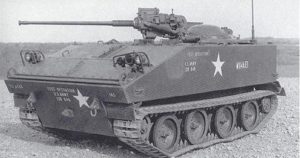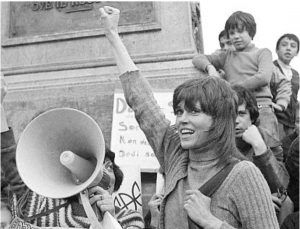I chose Armor branch in the main because of the large number of positive Armor role models on the Academy faculty. As I was also volunteering for a Vietnam assignment – 3-4 Cav, 25th Inf Division – I also chose the required six to eight-month detail in a like unit to get some experience before being thrown into combat. So, I wound up first in the 3-1 Cav, 1st Armored Division at Fort Hood, TX.
Looking back choosing the hot, dry Texas desert full of rattlesnakes to train for combat in a triple canopy tropical jungle full of cobras should not have earned me a passing grade on any rational geography quiz.
My Fort Hood assignment situation may help to understand some of the context we faced at that time. With respect to my armored Cav platoon, I was extremely fortunate. It was pretty much at full strength and most of the vehicles could move, shoot, and communicate. One downside was that four of those vehicles were M114’s – probably the most worthless piece of crap I ever had to try to work with.

Those so-called scout vehicles had problems moving in mud, had runaway electrical turrets that cost literally days of training time due to constantly needing repairs and to causing rib injuries to the crew.
Fortunately, I had great soldiers – literally, the best in the Division. For those not knowing about armored cavalry platoons, we were arguably the smallest combined arms team in the Army. At the Division level, my Sheridan section (3 vehicles) won the Sheridan tank gunnery qualification competition, my scout squad won that competition by a wide margin, my infantry squad got the only perfect score in the infantry squad attack course, and my mortar track tied for high score in the mortar crew annual qualification firing exercise. Those results were all due to having an experienced NCO leadership team that included a fiery old corps E-7 Irish platoon sergeant with more than 15 years’ service. I literally got a master’s degree in small unit military leadership working with him. To distinguish this situation from what was to come later – my equally excellent platoon sergeant in Vietnam was one year younger than me (having spent some time at both Lehigh University and Penn State before getting my USMA appointment my high school graduation year was two years ahead of many of my classmates); was on his third tour there; and got his 7th, 8th, and 9th Purple Hearts while we served together (you can decide if you think that made me a good or bad platoon leader).
One more story will also reinforce my satisfaction at being in the Cav. At the end of one training exercise, our Squadron Commander had just left the tank gunnery range we had been on for three days of firing when we got an idea. At a range of slightly more than 2 miles (3340 meters on the range finder) were a few Armored Personnel Carrier hulls that were used primarily for tank Sabot gunnery. Since we had already notified Range Control we would be closing down shortly, I got on the radio to ask the Squadron Commander for permission to try hitting one of the far targets with one of our missiles (costing $3000 each). His reply as I remember it was that we had already notified Range Control we were leaving, it was getting dusk, visibility was not the best…and that he bet us a case of beer we could not hit one. The crew and I sprinted to the firing line, raced through the firing checks, carefully laid the gun tube from low to target, and fired. After tracking the missile to the selected target, we jumped in two jeeps and raced down range to check the result. When too many holes would not let us visually identify our point impact, I waved my hand several inches over each hole in the target until I found the one that was still hot – and it was only 18 inches from dead center of mass. I relayed the results to the Squadron Commander immediately. To his credit, his driver dropped off a case of Michelob at our orderly room at noon the following day. The entire Sheridan section shared in the spoils. It was a good day to be in the Cav.
One more story is required to set the stage for my tour in Vietnam. For those of my classmates wondering why they could not get a date with Jane Fonda on that Memorial Day in 1970 when we were still 2nd Lieutenants, it was because she was with me at Fort Hood…eat your hearts out. My platoon was on riot control duty that weekend having been through training that included bayonet drills and weapons qualifications. We were all lounging in the day room when the call came in to report to the Killeen Gate at Fort Hood to repel protestors. When we got there, we jumped off our trucks to form up behind a single thin line of some two dozen MPs who were blocking the gate from Ms. Fonda and a couple hundred of her closest friends along with their usual TV camera crews. The MPs in the back line saw us forming up and seemed a bit relieved that reinforcements had arrived.

That’s when the fun started. We were in roughly four columns of ten with NCO’s at the rear, me at the front. We had our M14 rifles, gas masks, and bayonets. Live ammo was only issued to NCO’s, the designated sniper, and me. As the visiting group engaged in anti-Vietnam and anti-military rhetoric my platoon got swept up in the joy of the holiday. I started hearing urgent requests coming from behind me in the ranks: “Hey sir – can you move to the left? I can’t see her tits!” followed by “Hey, sir – when you’re done with her could you pass her back?” I turned around, called them all from at ease to attention, and then pointed out to them that the TV cameras accompanying the protestors also had microphones, so we would all wind up being in trouble depending on who heard what. That just brought out a round of giggles from most of them, including some of the NCOs. Never have had a problem telling friends and family this story when asked if our soldiers have great senses of humor. But they did quiet down. Then one of the protestors using a bullhorn shouted: “We demand the right to lower that flag (the large holiday flag on the post flagpole just inside the gate and to our immediate right) and burn it in protest!” Don’t honestly remember what I thought, then, but believe the current vernacular for my reaction would be “WTF?”. I spun quickly to face my platoon, called them to attention, then followed with the commands: “Fix…bayonets! Sniper, one magazine lock and load!” I looked over my shoulder and saw most of that back line of MPs had clearly heard my commands and were now looking over their shoulders at me with eyes opening ever wider. I then instructed in a very loud voice: “Make all bayonet thrusts below the waist! Above the waist use the vertical butt stroke series. Sniper – aim below the waist. But nobody – and I mean nobody – reaches that flagpole. Is that clear?” The aggressiveness of the replied chorus “Yes, Sir!” let me know comfortably that giggle time was over and executing our mission was not in doubt. The Sheriff showed up just then, telling their crowd to clear his street since they did not have a parade permit. They disbanded and we returned to our barracks day room assembly location.
Later that afternoon, we watched the protesters on TV burn one of their own American flags in the high school football stadium. Our dayroom discussion then moved on to how we each felt about their right to burn their flag and how it felt to get ready to use bayonets and bullets against the citizens of the very country whose constitution we had sworn to uphold and defend. It was something of an existential experience. When asked by my sniper if I would have given him the order to shoot one of them, I told him only after I had shot the first one in the ass, leading by example. Here the mission was to protect the flag not to kill the “enemy”. Ms. Fonda’s protests would later inflict themselves again on my world in Vietnam when it was broadcast that she encouraged our soldiers to mutiny.